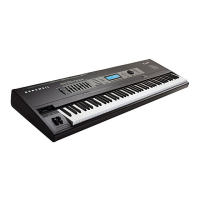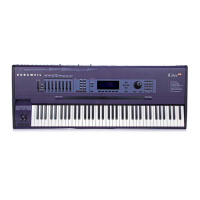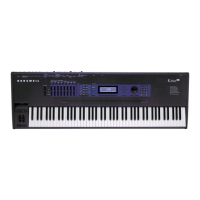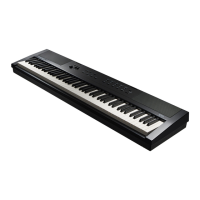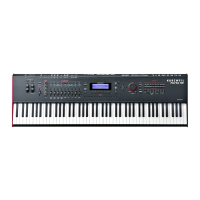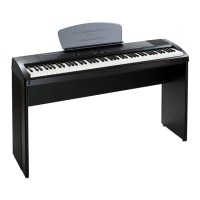Disk Mode
The Multiple Object Selector Page
13-37
2. Instead of scrolling through the object list manually and pressing Select for each object
you want to select, simply press Multi. The Multiple Object Selector appears.
3. Set the value of the Select parameter, which determines the operating mode for the
Multiple Object Selector.
4. Set the values of any other parameters that are visible. Different parameters are visible
depending on the value of the Select parameter. This step is called setting the selection
range. The selection range determines which objects get selected when you execute the
next step.
5. Press Set. In most modes, this selects every object in the selection range, and returns you
to the page you were on before you pressed Multi. Notice the asterisks between the IDs
and names of the selected objects.
6. Complete the operation you started in Step 1.
Operating Modes: The Select Parameter
The Multiple Object Selector has four operating modes, which determine how the Multiple
Object Selector deÞnes the selection range within the object list. Use the Select parameter to set
the operating mode. There are four values:
Type/Range Restricts the selection range to a particular object type (like programs or
samples), and lets you specify a range of IDs (like 1Ð100).
Dependents Restricts the selection range to objects that are dependents of whatever
object(s) you specify.
Everything No restrictions; the entire object list becomes the selection range.
Search String (SearchStrg) Restricts the selection range to objects whose names contain
a string of characters that you specify (for example, all objects whose
names include ÒclavÓ).
The Þrst two operating modes in the Multiple Object Selector have other parameters associated
with them. The following diagram shows what Type/Range mode looks like.
Multiple|Object|Selector||||||||||||||||
Select|:Type/Range||||||||||||||||||||||
Type|||:Sample||||||||||||||||||||||||||
Bank|||:200's|||||||||||||||||||||||||||
StartId:|200|||||EndId:|299|||||||||||||
||||||||||||||||||||||||||||||||||||||||
||||||||||||||||||||||||||||||||||||||||
|All||||Type||Toggle|Clear|||Set||Cancel
Use this mode for operations on a particular type of object (like loading all setups, or just Setups
250Ð299). The Type, Bank, StartId and EndId parameters let you specify which objects to work
with. See Type/Range Mode on page 13-41 for more information.
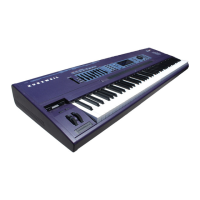
